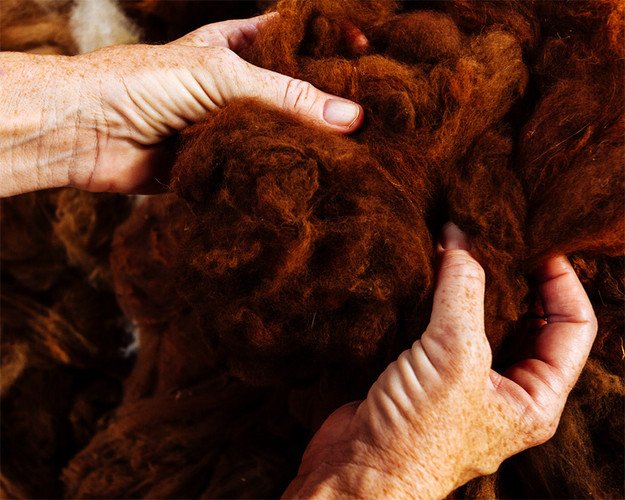Heated Socks vs. Thermal Socks: Which Is More Effective?
When choosing between heated socks and thermal socks, consider your specific needs. Heated socks use advanced technology to provide customizable warmth, ideal for frigid conditions. They rely on rechargeable batteries and can deliver intense heat, but comfort might vary. In contrast, thermal socks offer reliable insulation using materials like merino wool and synthetic blends, ensuring consistent warmth without batteries. For a deeper understanding of their performance and user experiences, the following sections will explore these options further.
Understanding Heated Socks: Technology and Features

Heated socks are becoming increasingly popular, especially among outdoor enthusiasts and those who struggle with cold feet in winter. These innovative garments utilize advanced heated technology that integrates heating elements seamlessly into the fabric. This feature allows you to enjoy adjustable warmth levels, ensuring your feet stay cozy during long hikes or frigid outdoor activities. Many heated socks come equipped with rechargeable batteries, offering convenience without the hassle of cords. Additionally, features like moisture-wicking materials and breathable designs enhance comfort, preventing sweat buildup. With various styles available, you can find options that suit your specific needs, whether you're skiing, snowshoeing, or simply enjoying a winter walk. Embracing heated socks means embracing freedom from cold weather constraints.
Exploring Thermal Socks: Materials and Insulation
When choosing thermal socks, you'll want to contemplate the insulation materials that keep your feet warm while also ensuring breathability for comfort. Common materials like merino wool and synthetic blends offer excellent thermal properties without sacrificing moisture-wicking capabilities. Understanding these factors can help you select the right pair for your needs, whether you're hitting the slopes or just staying cozy at home.
Insulation Materials Overview
Choosing the right insulation materials is essential for effective thermal socks, as they play a significant role in regulating heat and moisture. Understanding the various insulation types helps you select socks that keep your feet warm and dry. Consider these key materials for their efficiency:
- Merino Wool: Known for its natural insulating properties and moisture-wicking capabilities.
- Synthetic Fibers: Often lightweight and quick-drying, these materials offer good insulation efficiency and durability.
- Thinsulate: A specialized insulation that provides warmth without bulk, making it ideal for active use.
Breathability and Comfort Factors
How do breathability and comfort influence your choice of thermal socks? When selecting thermal socks, you need to take into account breathability factors that allow moisture to escape while keeping warmth in. Fabrics like merino wool and synthetic blends excel in managing humidity, preventing that clammy feeling. Comfort levels are equally important; a well-fitted sock made from soft materials enhances your overall experience, whether you're outdoors or lounging at home. Look for features like cushioning and seamless designs to reduce friction and irritation. Remember, the right combination of breathability and comfort not only keeps your feet warm but also promotes circulation, allowing you to enjoy your activities without distraction. Prioritize these elements to find the perfect thermal socks for your needs.
Warmth and Comfort: Comparing Heat Retention
When it comes to warmth and comfort, the insulation properties of materials in heated and thermal socks play an essential role. You'll want to take into account how each type generates heat and the duration they can keep your feet warm. Understanding these factors will help you choose the best option for your needs.
Insulation Properties of Materials
Three key factors influence the insulation properties of materials used in heated socks and thermal socks: material composition, thickness, and moisture-wicking capabilities. Understanding these elements can help you choose the right pair for your needs.
- Material Composition: Different fabrics offer varying insulation techniques; wool and synthetic blends often provide better warmth.
- Thickness: Thicker socks generally trap more air, enhancing warmth, but can affect fit and comfort.
- Moisture-Wicking Capabilities: Materials that wick moisture away prevent chill, boosting material effectiveness.
Heat Generation Mechanisms
Understanding the insulation properties of socks naturally leads to examining how these designs generate heat. Heated socks utilize electricity as their primary heat production method, converting electrical energy into warmth through resistive heating elements. This approach offers impressive energy efficiency, allowing for rapid heat generation that can be adjusted based on your needs. In contrast, thermal socks rely on materials like wool or fleece, which trap body heat and create a microclimate around your feet. While they lack active heat production methods, their effectiveness lies in their ability to retain warmth over time. Ultimately, your choice will depend on whether you prefer the instant warmth of heated socks or the natural insulation provided by thermal options.
Duration of Warmth Retention
While heated socks provide immediate warmth, their duration of warmth retention can vary considerably compared to thermal socks. When you're considering which option to choose, keep these factors in mind:
- Battery Life: Heated socks often rely on batteries that can last anywhere from 3 to 8 hours, depending on the setting used.
- Material Composition: Thermal socks, made from wool or synthetic blends, can retain warmth for hours, even after being removed.
- Environmental Impact: Cold weather can shorten the warmth duration of heated socks, while thermal socks maintain consistent heat retention regardless of external conditions.
Ultimately, if you want sustained warmth during long outdoor activities, thermal socks might be your best bet for reliable heat retention.
Battery Life and Maintenance of Heated Socks
When it comes to heated socks, battery life and maintenance are vital factors that can greatly impact your experience. You'll find that various battery types—such as lithium-ion—offer different runtimes, often ranging from 4 to 10 hours per charge. It's important to choose socks with a battery that suits your needs. Charging methods also matter; some models feature removable batteries, while others have built-in options that require direct charging. Regularly inspect the battery for any signs of wear and verify connections are clean to maintain performance. Proper care can extend battery life and maximize your comfort during outdoor adventures. Knowing these details helps you enjoy the freedom of warmth without worrying about battery failures.
Durability and Longevity of Thermal Socks

Heated socks may offer advanced warming features, but thermal socks provide a reliable option for those seeking comfort in colder conditions. When considering durability and longevity, it's crucial to focus on key durability factors. Here are three elements that affect the lifespan of thermal socks:
- Material Quality: High-quality fibers, like merino wool or synthetic blends, enhance durability.
- Construction Techniques: Reinforced seams and cushioning improve wear resistance and overall performance.
- Longevity Testing: Regular testing of thermal socks under various conditions helps assess their resilience against wear and tear.
Price Point: Evaluating Cost vs. Performance
How do heated socks compare to thermal socks when it comes to cost versus performance? In a cost analysis, heated socks typically have a higher upfront price due to their technology, including batteries and heating elements. However, they offer unparalleled warmth, making them ideal for extreme conditions. On the other hand, thermal socks are generally more budget-friendly and provide excellent insulation for moderate cold. When considering performance comparison, heated socks excel in delivering customizable warmth, whereas thermal socks rely on material quality and thickness for heat retention. Ultimately, your choice depends on your specific needs—if you seek freedom from the cold, investing in heated socks may be worth it, but if cost is a concern, high-quality thermal socks can still keep you warm.
User Experiences: Real-Life Testimonials and Reviews
Which type of sock truly delivers on its promises? User testimonials and user comparisons reveal valuable insights into the effectiveness of heated vs. thermal socks. Here's what users are saying:
- Warmth: Many users swear by heated socks for their unparalleled warmth, especially during frigid outdoor activities.
- Comfort: Thermal socks often receive praise for their comfort, with some noting they can wear them all day without discomfort.
- Battery Life: Users frequently compare battery-powered heated socks, highlighting varying battery lives, which can influence their choice for extended excursions.
Ultimately, personal experiences dictate preference, with some opting for heated socks during extreme conditions, while others lean towards the consistent comfort of thermal options. Understanding these real-life testimonials can help you make an informed decision.
Frequently Asked Questions
Can Heated Socks Be Used in Wet Conditions?
Heated socks can be used in wet conditions if they're designed with water resistance and moisture management features. However, always check the manufacturer's guidelines to guarantee peak performance and avoid damage from excess moisture.
Are Thermal Socks Suitable for All Outdoor Activities?
Sure, you could wear thermal socks for bungee jumping, but let's be real—you'll want warmth for hiking, skiing, or camping. Their benefits include insulation and moisture-wicking, making them suitable for most outdoor activities you crave.
How Do I Clean Heated Socks Properly?
To clean heated socks properly, use gentle washing techniques like hand-washing or a delicate cycle. Avoid harsh detergents, and follow maintenance tips, such as air drying, to preserve battery life and fabric integrity.
What Sizes Are Available for Heated and Thermal Socks?
Heated sock sizes typically range from small to extra-large, accommodating various foot sizes. Similarly, thermal sock sizes often follow standard shoe size charts. You'll find options that fit snugly, ensuring comfort and warmth during use.
Can I Wear Heated Socks While Sleeping?
When it comes to heated socks, safety's paramount. You can wear them while sleeping, but make certain they're designed for sleep comfort. Avoid overheating; otherwise, you might find yourself in hot water the next morning.






